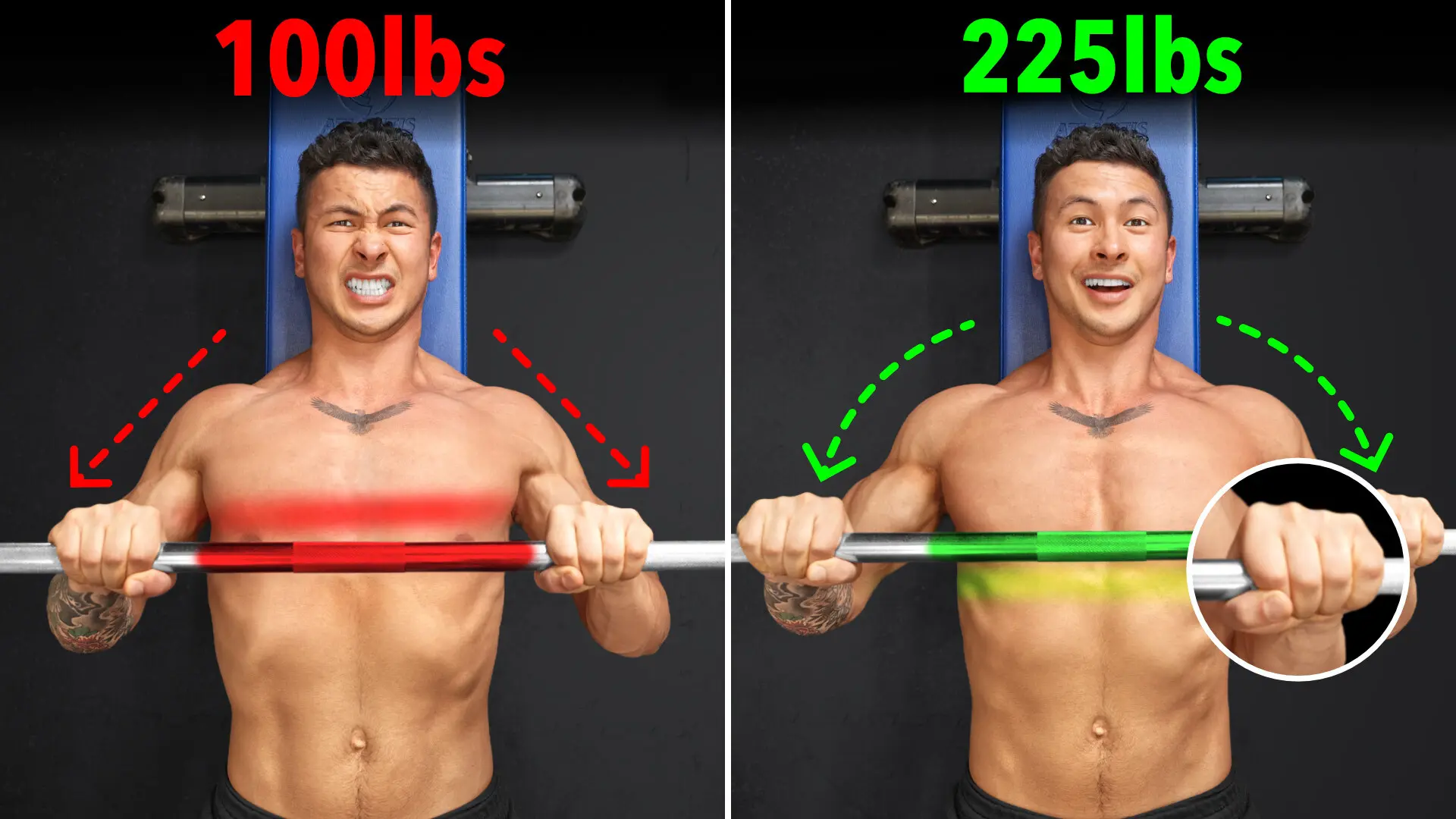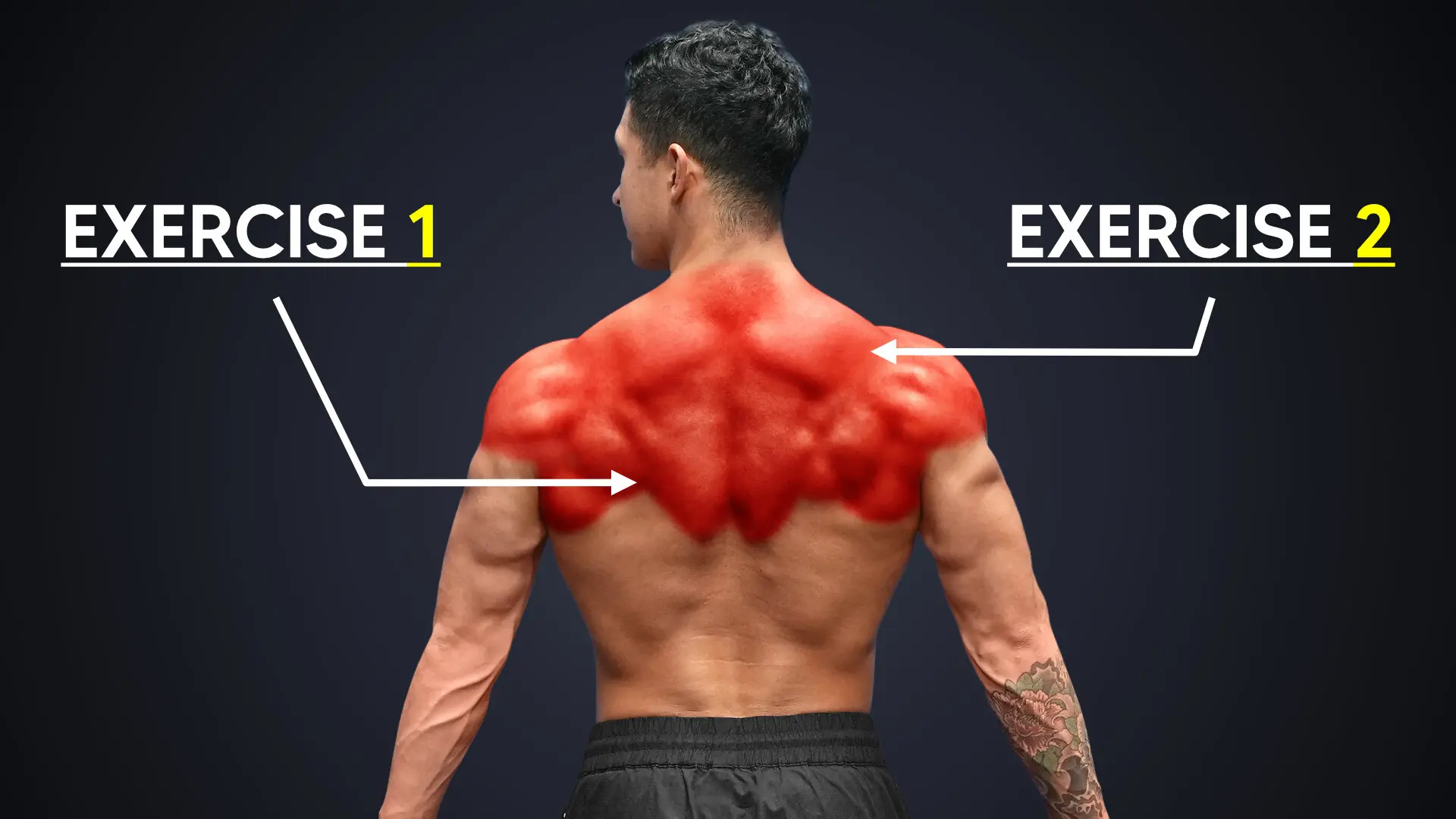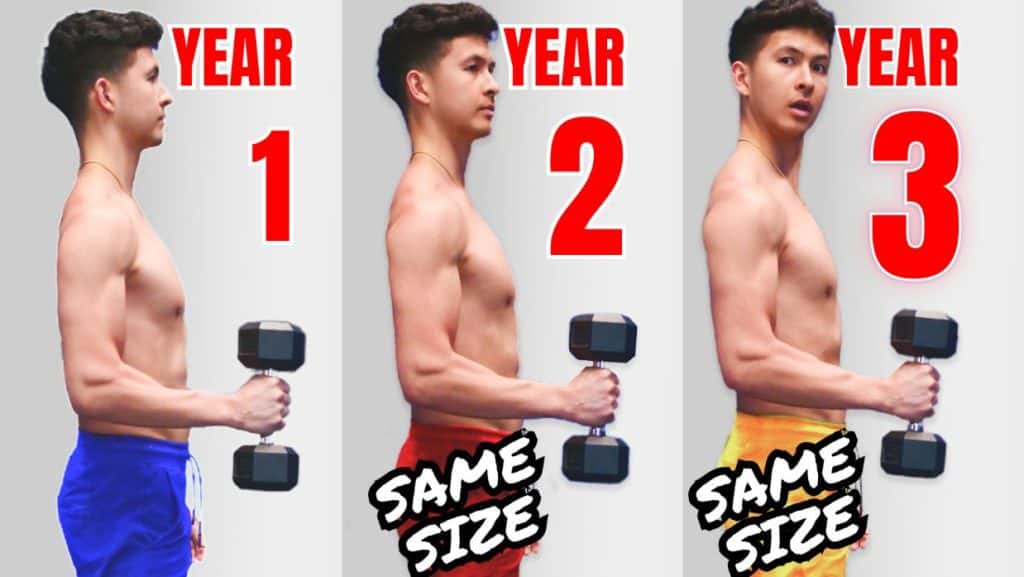
"I Lift But Don't Look Like It" (5 Muscle Growth Mistakes To Avoid!)
You're doing everything right. But all that effort isn't translating to muscle growth. Find out the reasons why - and how to fix them - here.
Do you lift weights every week? Twice a week? Three times? More? But is your muscle growth results still lacklustre? Or, more specifically, are your arms, chest, or whatever muscle you’re trying to make bigger actually staying the same size? Well. Listen up. In this article, I'm going to show you 5 reasons why people who lift consistently fail to notice any significant muscle growth at all - and ultimately stay the same size for years on end. And if any of these reasons resonate with you, I'll also show you how to fix each one.
Before that: if you're looking for a training program that'll guide you through the fastest way to gain muscle (while taking care of your training, nutrition, and even supplementation), I've got just the thing for you. Every BWS program is designed to help you learn how to grow muscle in the most time-efficient manner. And best of all? It's all rooted in science. For more information on how BWS programs can transform your physique- FAST:
Click the button below to take my analysis quiz to discover the best program for you:
↓
Reason 1: Failing To Train With Sufficient Effort
First step: ensure that you are training with sufficient effort. Research implies that it’s not “necessary” to train to absolute failure every set. But you do need to get close enough to it. Meaning? During each of your sets, you need to push hard enough such that you’re at least 1-3 reps short of the point where you could not possibly do 1 more rep with proper form.
But many people miss the mark on this one by either:
- Simply not pushing hard enough during a set to reach this 1-3 rep short of failure zone OR
- Overestimating how close they are to reaching this zone. For example, thinking that they just did a set with only 1 rep left in the tank before they reached failure, but in reality, could have done 5 more if they truly pushed
Many Lifters Hamper Muscle Growth By Not Pushing Hard Enough
Illustrating the first muscle growth mistake is a 2017 study. Researchers asked 160 regular gym-goers this question: "What weight do you usually use for 10 reps on the bench press?" Thereafter, the gym-goers reported to the lab and performed as many repetitions as possible with their self-reported weight.
And the findings? On average, the lifters performed 16 reps with what they would usually do 10 reps with. In fact, almost 15% of the participants performed more than 20 reps with the load they regularly perform 10 reps with during training. Now, what does that tell you? It just means that they were likely training with far too light loads relative to their true capabilities - which is actually necessary to optimize muscle growth.
Illustrating the second muscle growth mistake is another study published in 2017. This is where 141 lifters grouped by lifting experience were:
- Asked to choose a weight they regularly used in training on various exercises, AND THEN
- To predict how many reps they could do to failure
The participants then performed each of the exercises with their self-selected load for as many reps as possible. Beginners significantly underestimated how many reps that they could do. Sometimes by up to 8 reps! More advanced lifters in the group did estimate more accurately. But still underestimated their true abilities by about 1-2 reps on average.
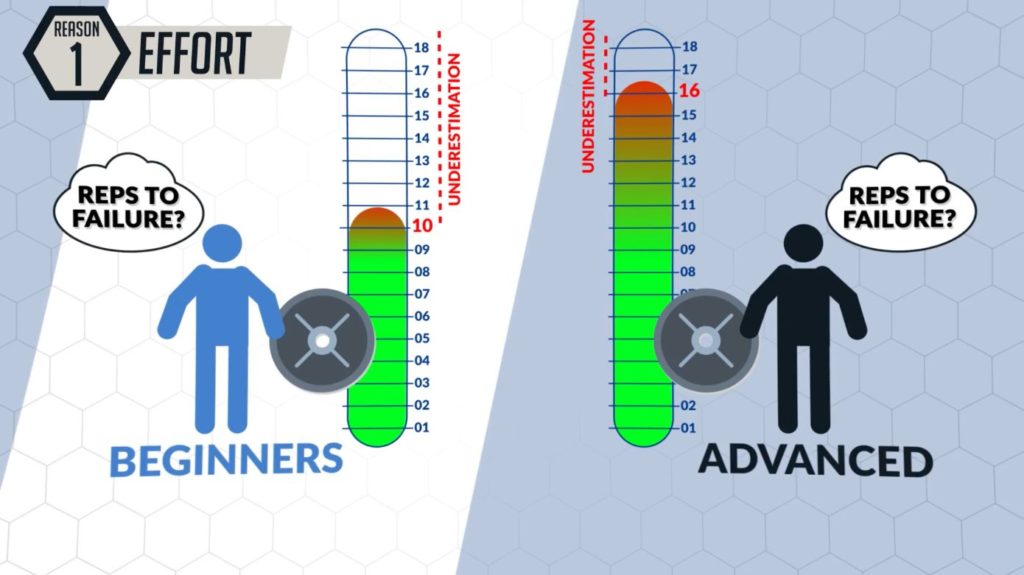
Meaning that some of you reading are likely either:
- Failing to push yourselves hard enough to reach the zone needed to maximize muscle growth OR
- Think that you are, but in reality, have much more left to give than you think
Reason 2: Not Training With Enough Intensity
Secondly, for optimal muscle growth, you want to make sure that you're training with enough intensity. Or, in other words, using heavy enough weight. For a long time, it was believed that the most muscle was built in the 'hypertrophy rep range'. This was thought of as anywhere between 6-12 repetitions.
This concept has since been disproven many times over. And it appears that similar muscle can be built across a wide range of repetitions (e.g. with 3-5 reps, 6-12 reps, and 12-25 reps).
It's Not The More Reps, The Better
But, it does appear that there is a limit to how high reps you should go before muscle growth is compromised. In a 2018 study, researchers had participants train for 12 weeks using either 20% , 40%, 60%, or 80% of their maximal strength for each exercise. Despite taking all sets to failure, gains in the 20% condition were approximately half that achieved in the 40%, 60%, and 80% conditions, which all had similar growth. Based on this, the authors concluded that hypertrophy is likely impaired when training with loads lighter than around 20%-40% of your maximal strength for an exercise. Or your 1-rep-max (1RM).
So, how many reps should you do to build muscle? As a general rule of thumb, if you can perform more than 30 repetitions with a given load, even if it is to failure, you likely need to increase the weight to drop the reps. Or else you will be leaving gains on the table.
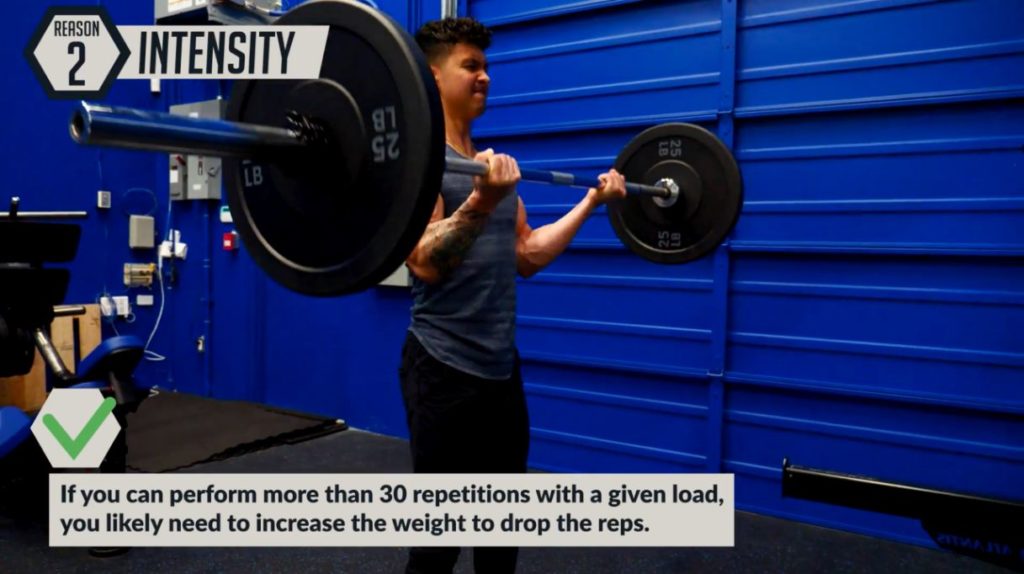
Reason 3: Neglecting The Principle Of Progressive Overload
What was once hard enough to cause muscle growth when you started working out will likely not be hard enough after a few weeks or months. The easiest and most straightforward way to make sure you continue to push yourself is to periodically try and increase the weight of an exercise. For example, if you used 30lbs last week and performed 10 reps, try to use 35lbs this week and perform 10 reps.
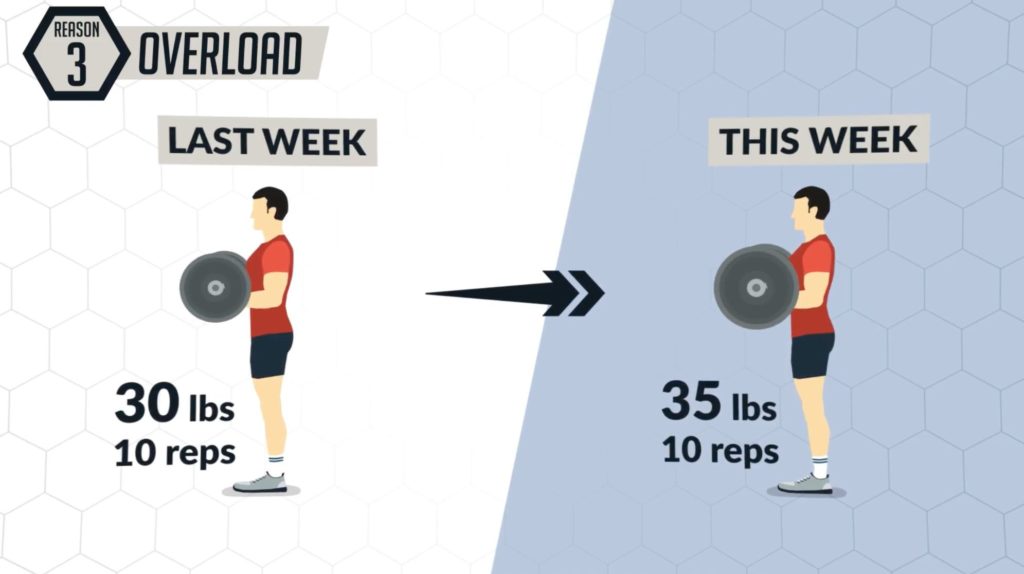
Now, this strategy works very well for new lifters. But as you become more trained, it is unlikely that you will be able to make noticeable progress on a week by week basis. For more advanced individuals, a more likely scenario is to try and increase the number of reps. For example, you could program a rep range and try to work through it before increasing the weight:
- Start by using a weight that you can perform for 3x10
- The following week, try and do another rep on the first set
- The week after that, try to do another rep on the first two sets, then an extra rep on all three sets
- Continue this process until you are able to perform 12 reps for all 3 sets
- And finally, increase the weight and start over
These are only a few examples. But what’s most important is that you do not let yourself fall into the mistake of doing the same exact thing for too long. Make sure that every week you are challenging yourself by training with enough effort and then increasing the weight or reps when you start to feel it become easier. This is one of the most important things to do for muscle growth.
Reason 4: Not Paying Attention To Proper Exercise Execution
As you continue challenging your muscles and pushing harder than you used to, you need to ensure that your technique remains on point.
Many make the mistake of trying to do too much too soon. And that results in the sacrificing of good technique for more weight and/or reps. So even if you checked off point #3, you could be “artificially” getting stronger and improving your sets and reps every week - but compensating by using more momentum or shortening the range of motion. This minimizes the tension and growth that your target muscle will experience.
And, in many cases, is why those of you who have been getting stronger and progressing your exercises just don’t see the muscle growth along with it. We’ve seen multiple times in the research that using a partial range of motion rather than a full range of motion leads to less growth. Even if heavier weight is used.
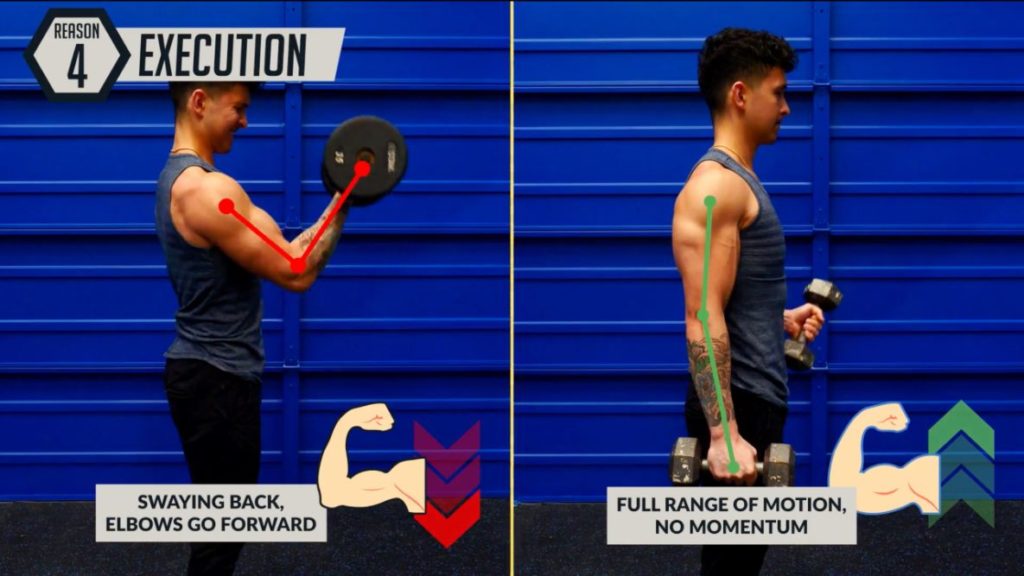
Many of you watching will actually need to reduce the weight that you’re used to using. And, instead, focus on improving your form. Trust me, I know you’ll be feeling as if you’re taking a step backwards. But that couldn’t be further from the truth and is necessary if you want to start actually seeing results.
Never sure if you're performing your exercises correctly - and optimally for muscle growth in the gym? Don't worry. Our 3-on-1 coaching program can help. My team of experts here at BWS – and I – will always take the time to explain the dos and do not's of each exercise's execution in your personalized training program. Find out more about how we can help you gain muscle faster through proper exercise execution:
Click the button below to find out more about the 3-on-1 coaching program:
↓
Now, before we dive into reason #5, what I want you to do is first run through the following checklist based on the points we just covered.
Official Muscle Growth Mistakes Checklist
Are You Taking Each Of Your Sets In Your Workouts To Within 1-3 Reps Of True Failure?
A good way to make sure that you are training with enough effort is to perform a single set to failure for a given exercise every few weeks. Doing this will help to make sure that you are actually training as close to failure as you think you are. For example, say that you normally do 3x10 on the chest press. Every 2-3 weeks, perform your first 2 sets as you normally would but then take your last set to failure. If you can do more than 12-13 reps, then you likely need to increase the weight.
But just keep in mind that training to true failure can be dangerous. And it should be implemented with caution. This practice works very well for machine and single-joint exercises. But if you are going to do this for a multi-joint exercise such as the bench press, then make sure that you have a spotter and stop before your form starts to break down.
Are You Training With Enough Intensity?
If you can perform more than 30 repetitions when you take a set to failure, then you need to increase the weight that you’re using.
Are You Progressing Your Training To Keep Up With Your Muscle Growth?
Remember, what was once enough to stimulate growth in your muscles eventually will no longer be enough. You will have to increase the weight and/or reps at some point to stimulate more growth. And you need to use a systematic way of implementing this.
Finally, Are You Training With Good Technique And A Full Range Of Motion?
Many of you will say yes to this. But, in reality, are failing this check and need to lighten the weight. During your next workout, take a video of yourself doing an exercise with a certain weight. Then take a video of yourself doing that exercise once you have added more weight or reps. The two videos should look identical. In fact, aside from your facial expressions, your warm-up sets and your most difficult sets should look pretty much identical. If not, then you're likely compensating. And sabotaging your gains as a result.
This now brings me to….
Reason 5: Failing To Incorporate Optimal Training Volume
Checked all of these boxes? And you are still not making good progress? Then and only then should you start considering your training volume.
However, the training volume you need for the fastest muscle growth is highly variable. And what will be enough for one person to grow may not be enough for someone else. Based on current research it appears as though at least 10 sets per muscle group per week is a rough estimate of where to start. But once again, this will be different for everyone.
If you find yourself in a place where you need to increase volume, then a good rule of thumb is to increase whatever you are currently doing by 20-30% to stimulate more growth. For example, if you are currently performing 10 sets of chest exercises per week but are failing to make good gains, then increasing to performing 12-13 sets per week is probably a good place to start. But again, this is the last consideration you should be making.
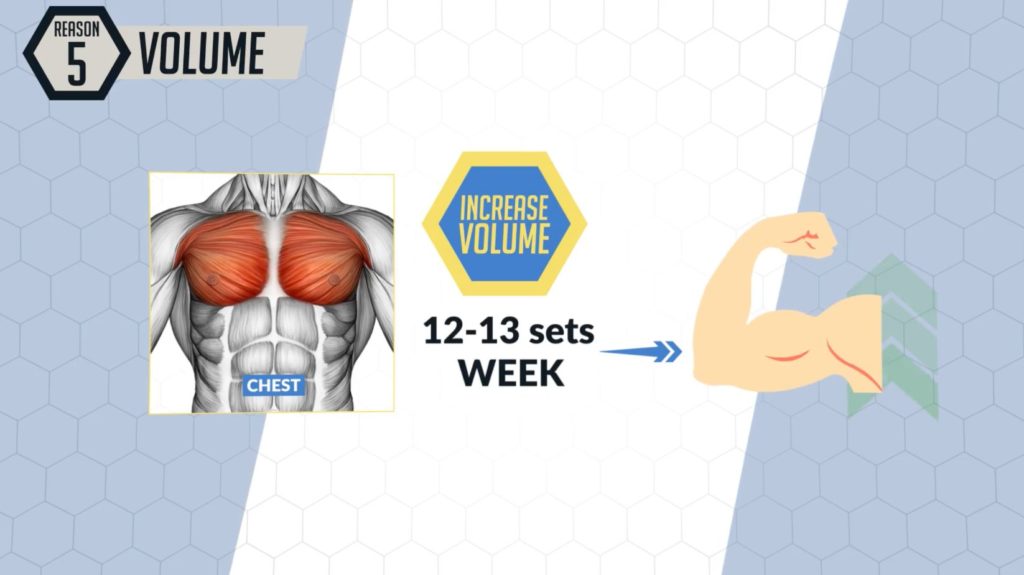
Muscle Growth Mistakes: Takeaway
And that’s pretty much it! If you’re not experiencing the gains you know you should be, then go through this checklist. Odds are, you’ll find at least one culprit that may be the reason why. But, keep in mind it’s also absolutely essential that you pair all of this with a solid nutrition plan to fuel and support your recovery and growth.
And for a step-by-step program that does all of this for you, by showing you how to train and how to eat week after week to maximize growth and strip off excess fat, then:
Click the button below to take my analysis quiz to discover the best program for you:
↓


